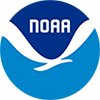This image collection, presently comprised of 224 photographs, maps, and drawings, is the product of a wider effort to collect and analyze the synoptic meteorological records of the first IPY that have been scattered over the course of time. These unique records likely contain valuable information on the state of the Arctic climate in the late 19th century and therefore provide a benchmark against which our current understanding of climate and environmental change can be evaluated.
Beyond the intrinsic interest of the images—the people, the exotic scenery of the Arctic—there is a wealth of additional information of particular interest to the climate scientist and meteorologist. For example, there are both pictures and diagrams of the instruments used on the IPY expeditions and maps showing how they were postioned at each station. This metadata provides both the means to evaluate possible bias and error in the records and to convert the historical measurements to comparable modern values.
In most cases the images are presented in unedited form. This was done so that the user may see the condition of the original images, and to provide the user with the most choice with regard to cropping or otherwise enhancing the images.
On methods of reproduction
Many of the images in this collection are engravings or lithographs. While these may look like drawings, nearly all of these images were engraved directly from glass-plate photographic negatives. Often there are examples of both the unpublished photograph and the engraving found in the expedition report (Fig. 1). The reason that photographs were not often reproduced directly is that half-tone photolithography was not fully developed at the time the reports were published. The only means of reproducing a photograph was either expensive stone lithography or callotype (phototype), or by making a steel or wood block engraving from the photograph. The latter method was brought to a very high level in the 19th century and was most suitable for the ‘hot-type’ printing press. This process also allowed poor quality photographs to be enhanced to some extent.



File Names
Where possible the file names used in this collection reflect the original document identification number or the page number in the reference from which the image was scanned.

